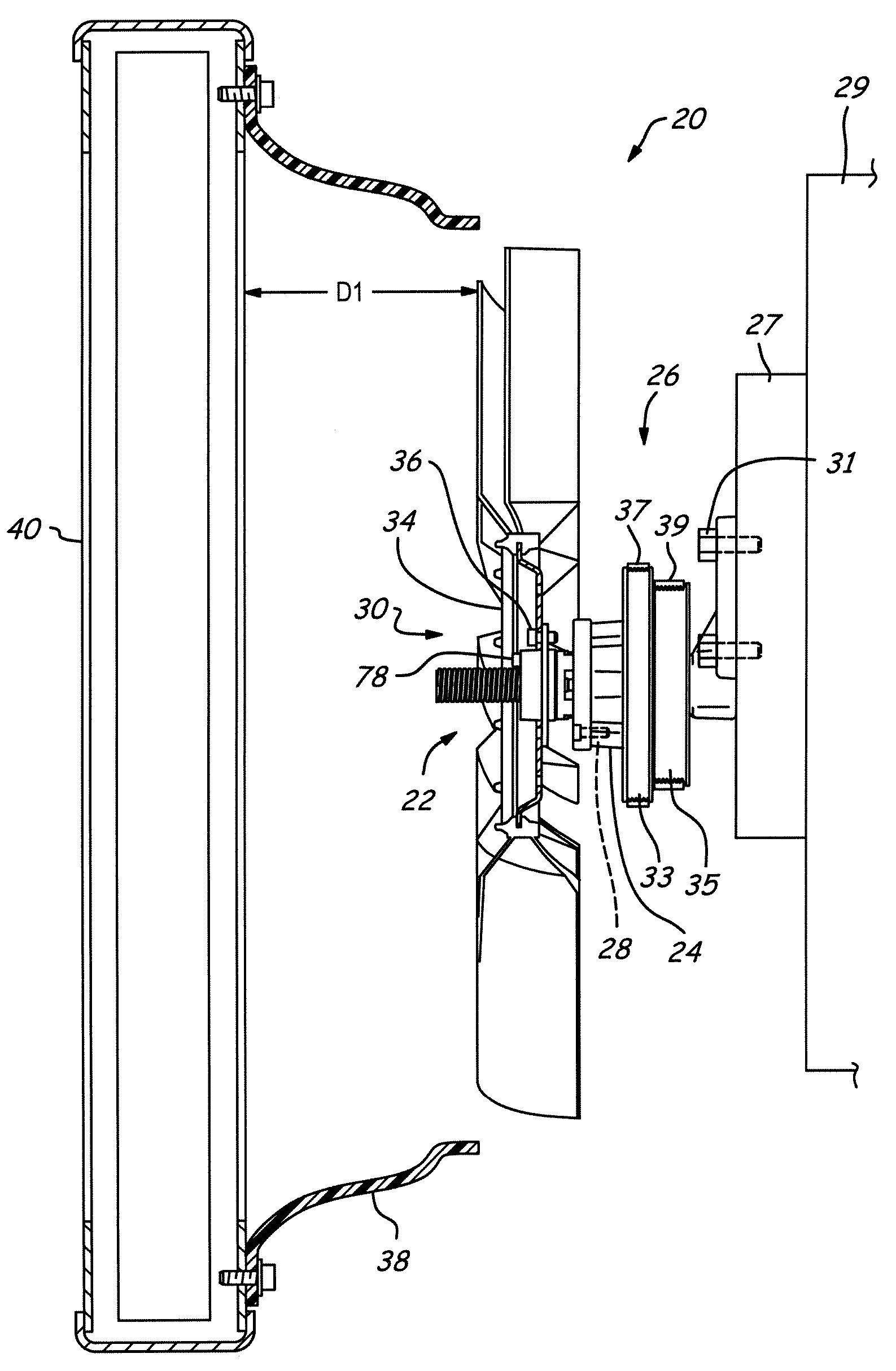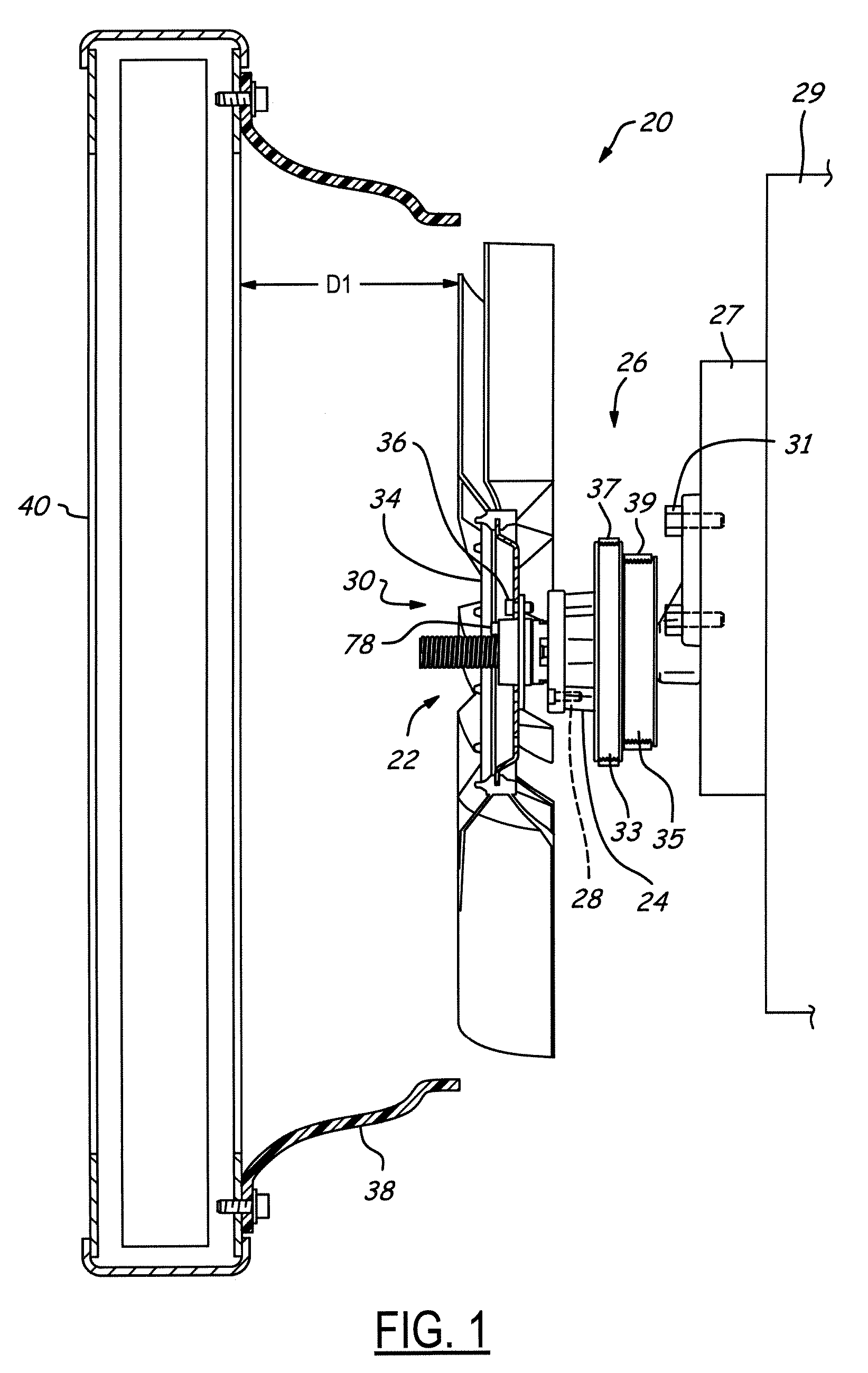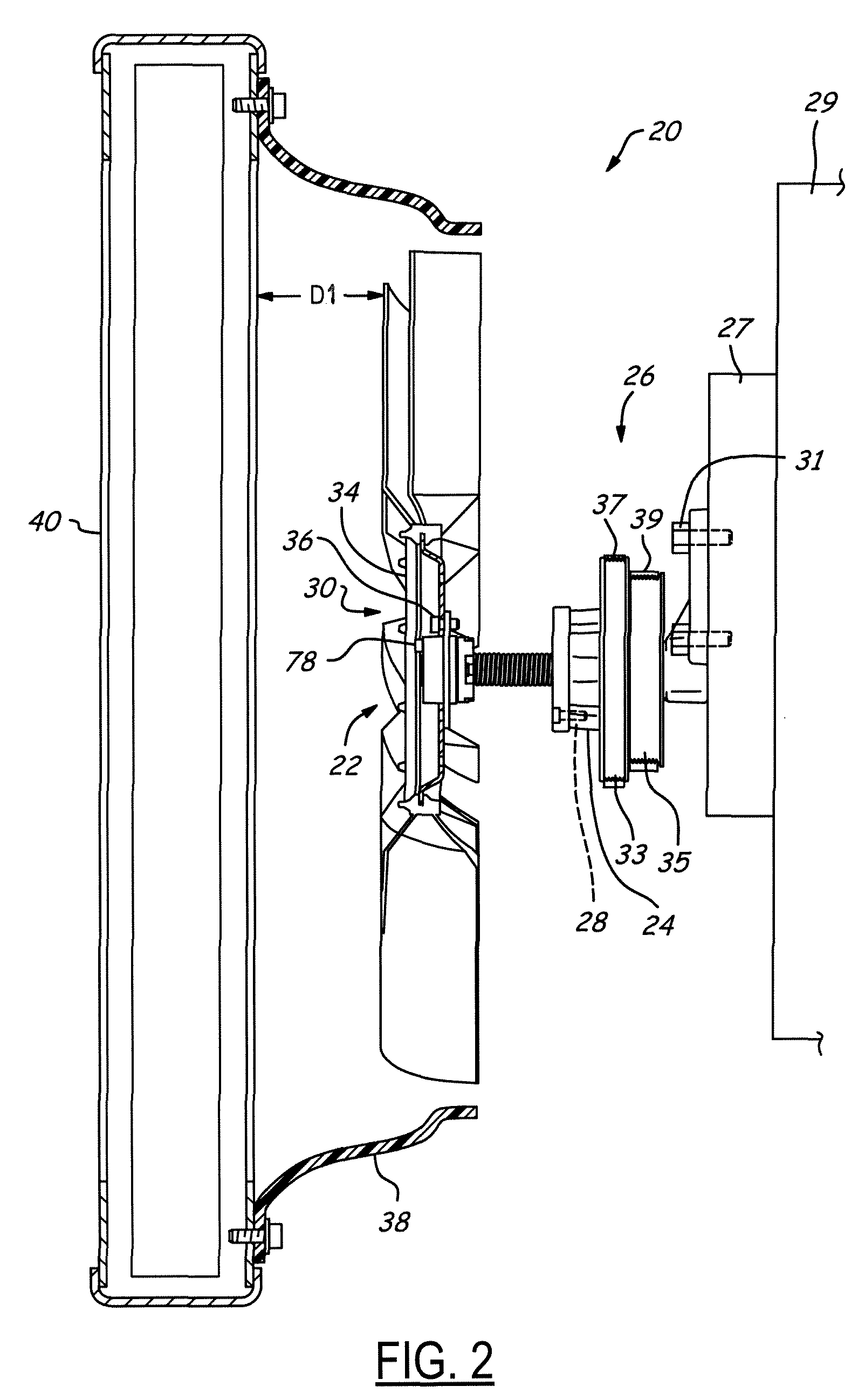Fan penetration feature for in-vehicle testing
a technology for in-vehicle testing and fan penetration, which is applied to non-positive displacement fluid engines, wind motor components, liquid fuel engine components, etc., can solve the problems of limited amount of fan locations achievable, inability to optimize the fan within these parameters, and time-consuming processes, so as to achieve efficient fan performance and reduce the effect of changeover tim
- Summary
- Abstract
- Description
- Claims
- Application Information
AI Technical Summary
Benefits of technology
Problems solved by technology
Method used
Image
Examples
Embodiment Construction
[0014]In the following figures the same reference numerals will be used to refer to the same components. In the following description, various operating parameters and components are described for one constructed embodiment. These specific parameters and components are included as examples and are not meant to be limiting.
[0015]Referring now to FIGS. 1 and 2, a cooling system 20 is depicted as having a fan penetration fixture 22 secured to a front portion 24 of a fan hub assembly 26 preferably using one or more socket head cap bolts 28. The fan hub assembly 26 is also coupled opposite the fan penetration fixture 22 to the FEAD (Front End Accessory Drive) bracket on the front gear case 27 of the engine 29 preferably using a series of bolts 31. The fan hub assembly 26 also has a crank pulley 33 and accessory pulley 35. A drive belt 37 is coupled to the crank pulley 33 which in turn is mounted to the engine crankshaft (not shown). A second drive belt 39 is coupled to the accessory pull...
PUM
 Login to View More
Login to View More Abstract
Description
Claims
Application Information
 Login to View More
Login to View More - R&D
- Intellectual Property
- Life Sciences
- Materials
- Tech Scout
- Unparalleled Data Quality
- Higher Quality Content
- 60% Fewer Hallucinations
Browse by: Latest US Patents, China's latest patents, Technical Efficacy Thesaurus, Application Domain, Technology Topic, Popular Technical Reports.
© 2025 PatSnap. All rights reserved.Legal|Privacy policy|Modern Slavery Act Transparency Statement|Sitemap|About US| Contact US: help@patsnap.com



